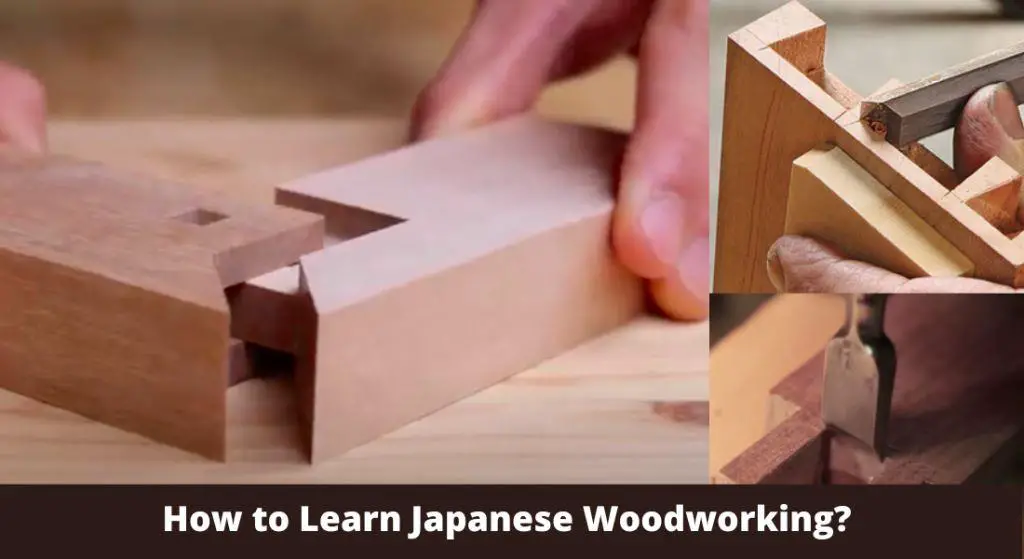Japanese woodworking is a type of craftsmanship. It has been practiced for centuries. It’s a skill that requires patience, dedication, and knowledge to master. The traditional methods used in Japanese woodworking involve the use of specialist tools and techniques, so it can be difficult to learn how to do it correctly. However, with the right resources and guidance, anyone can learn how to create beautiful pieces of furniture or artwork using these ancient techniques.
How to Learn Japanese Woodworking?
Learning Japanese woodworking is a rewarding and challenging journey. With the right knowledge, tools, and practice, anyone can master this ancient art form. Today we will discuss How to Learn Japanese Woodworking.
1. Understand the Basics of Woodworking:
Before you begin learning the art and craft of Japanese woodworking, it is important to gain a basic understanding of general woodworking knowledge. This includes types of woods, tools, joinery techniques, safety protocols, and other aspects of carpentry. Taking a basic woodworking course or reading relevant books can help you understand the fundamentals of working with wood.
2. Study Traditional Japanese Joinery Techniques:
Japanese joinery techniques involve intricate designs that require precise measurements and exact cuts to ensure stability and strength in joints. To learn these traditional methods, study up on classic works such as ‘The Book of Joinery’ by Kiyosi Seike, which provides detailed guidance on building with wood. You can also watch instructional videos and read articles online to get started.
3. Purchase Quality Tools:
Having the right tools is essential for successful woodworking projects. When purchasing tools specific to Japanese woodworking, it’s important to invest in good quality pieces that are designed to last a long time. This includes saws and chisels specifically made for traditional joinery techniques as well as hand planes and other specialized equipment necessary for precision workmanship.
4. Practice Makes Perfect:
As the old saying goes, practice makes perfect! The best way to learn Japanese woodworking is by taking your time and practicing regularly until you become comfortable with the techniques and confident in your abilities. You can start by completing small projects such as wooden boxes or frames and gradually increase the complexity of your work as you gain experience.
5. Seek out Mentors:
Finally, it’s always beneficial to seek out experienced mentors who can provide advice and teach you helpful tips for successful woodworking projects. Connecting with local woodworkers or joining online forums are great ways to learn from more experienced practitioners in the field. With guidance from knowledgeable mentors, you will be able to refine your skills and create beautiful pieces of Japanese woodworking art!
The best way to start learning how to do Japanese woodworking is by researching what materials are available and familiarizing yourself with some basic techniques. You should also look into how different types of wood behave when they’re worked with certain tools and how to use them safely.
If possible, it’s also a good idea to find an experienced teacher or mentor who can help you with the basics and provide guidance on how to get better at the craft. Alternatively, there are some great online resources where you can learn how to do Japanese woodworking step-by-step.
What is special about Japanese woodworking?
Japanese woodworking is a centuries-old tradition that has become renowned for its precise and delicate craftsmanship. Japanese craftsmen use special woodworking tools, techniques, and materials to make sure everything is exact and well-made.
One of the most common materials used in Japanese woodworking is hinoki. Hinoki is a type of cedar. Hinoki has a straight grain that helps create tight joints when making furniture pieces or decorative items. The attention to detail also shows in their joinery techniques. Here they use traditional mortise and tenon joints as well as wooden pegs instead of nails or screws. These techniques help make sure that each piece is strong and will last for many years to come. Japanese woodworking is a unique art form that has been passed down through generations, and the beauty of the pieces speaks for itself.
FAQs:
Q: What tools should I use for Japanese woodworking?
A: The traditional tools used in Japanese woodworking include chisels, planes, saws, and hammers.
Q: How long does it take to master Japanese woodworking?
A: Learning how to do Japanese woodworking can take several months or even years. It depends on how quickly you pick up the skills and how much time you put into them.
Q: Is there any online resources for Japanese woodworking?
A: Yes, there are plenty of online courses and tutorials available. These resources can help you learn how to do Japanese woodworking.
Japanese woodworking is an art form that takes patience and dedication to master. However, with the right resources and guidance, anyone can learn how to create beautiful pieces of furniture or artwork using these traditional techniques. Whether you’re looking for an experienced teacher or mentor, or want to find some great online tutorials, there are plenty of options available for those wanting to learn how to do Japanese woodworking. Good luck on your journey to mastering this beautiful craft!



















